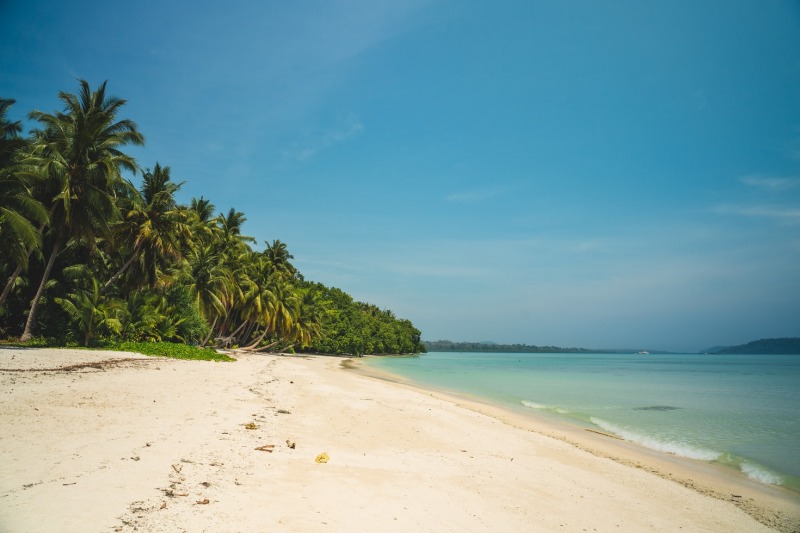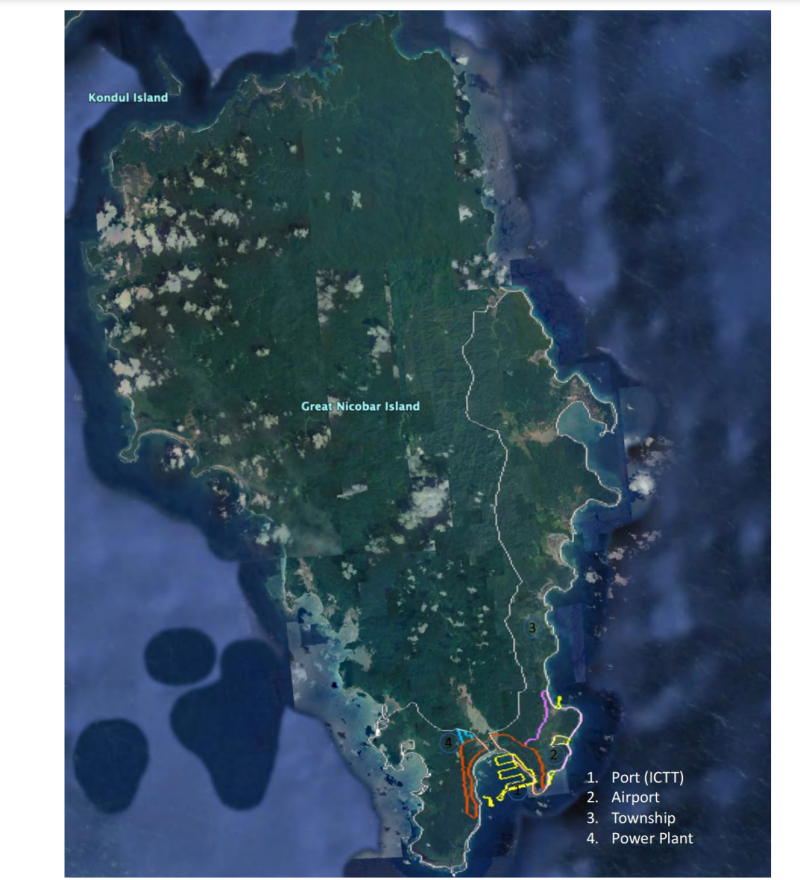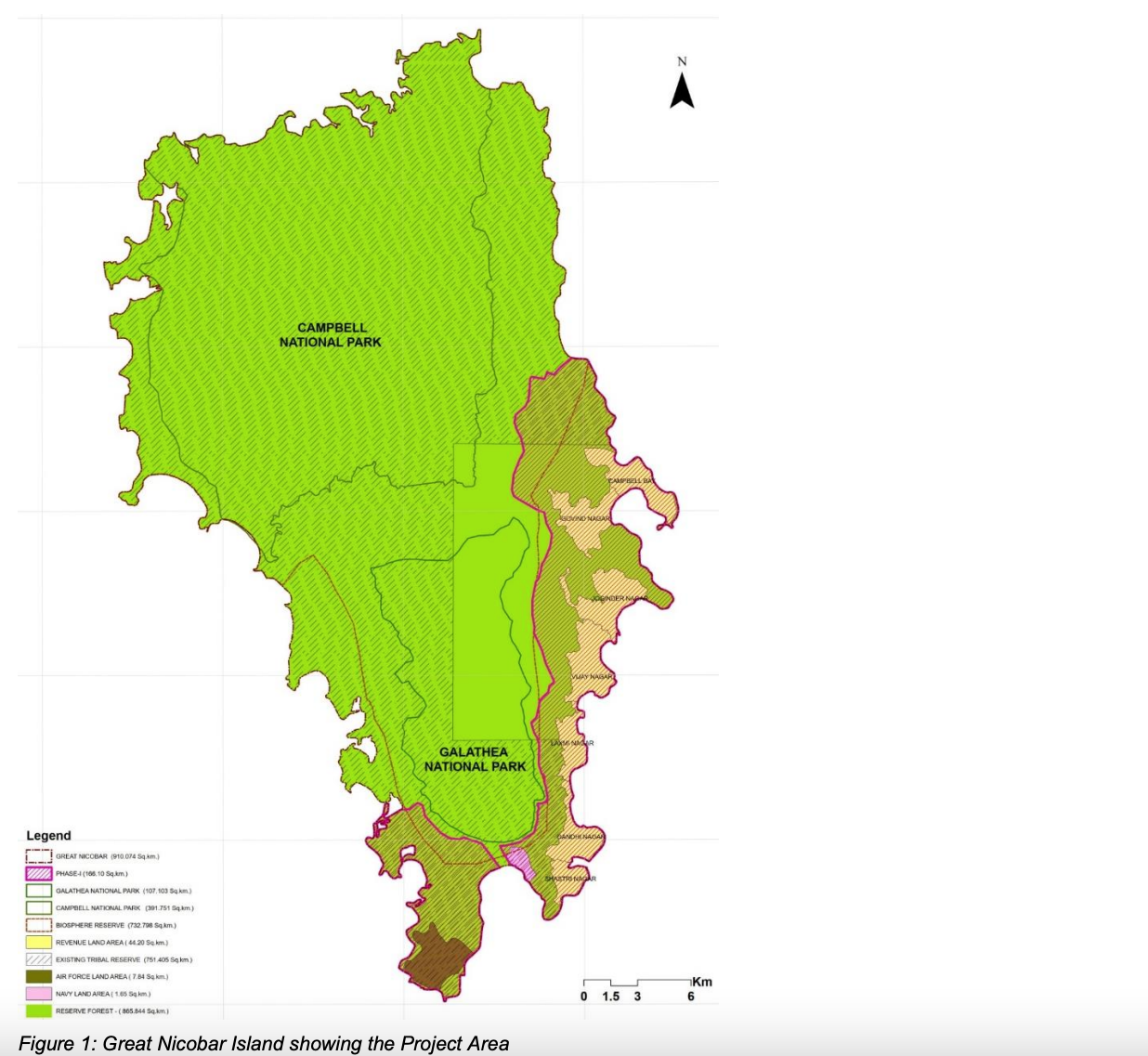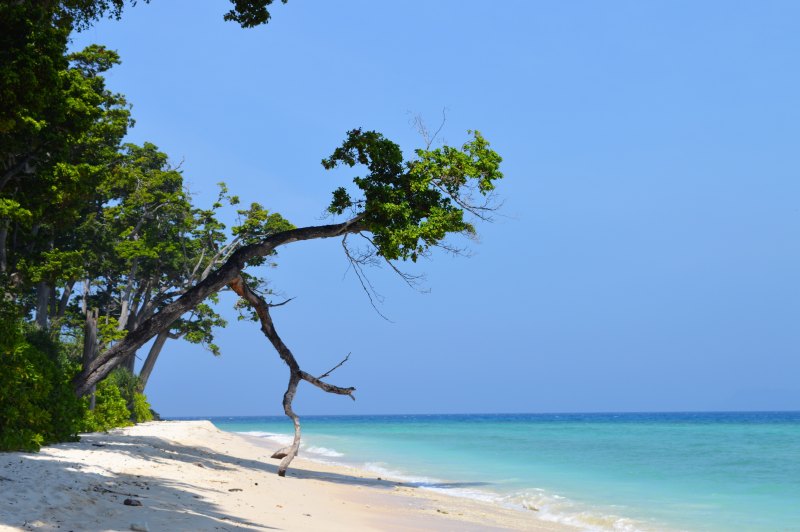Explained: The controversial project to ‘develop’ the Great Nicobar Islands; public hearing on Jan 27
Andaman and Nicobar Islands are global hotspots for biological diversity. The Indian government’s NITI Aayog has prepared a 75,000 crore project for the ‘holistic development’ of the islands which includes a shipment terminal, airport, township and power plant. Environmentalists and biologists are opposing the project. A public hearing on the project is scheduled for January 27.


Environmentalists and biodiversity experts have raised strong objections to this project of the NITI Aayog. They warn that this project is likely to impact turtle and megapode nesting sites and coral reefs at the islands. Photo by: Unsplash/tatonomusic
Andaman and Nicobar Islands are one of the global hotspots for rich biodiversity with almost 86 per cent area of these islands covered with lush green rain forests. This archipelago also has great historical and anthropological significance as these sparsely populated islands are home to some of the aboriginal tribes that are protected under India’s 1956 Protection of Aboriginal Tribes Regulation Act because of the vulnerability of their traditional culture.
But soon all this may be history, warn environmentalists, as the Indian government has an ambitious and controversial project – ‘Holistic Development of Great Nicobar Islands in Andaman and Nicobar Islands’ – whose public hearing is scheduled on January 27 by the Andaman Nicobar Administration Pollution Control Committee which has invited comments, suggestions, views, objections from people by January 26.
The Holistic Development project has been conceptualised by NITI Aayog, the public policy think tank of the central government.
Ahead of the public hearing, a comprehensive environment impact assessment (EIA) of the proposed project by the Andaman and Nicobar Islands Integrated Development Corporation (ANIIDCO) stated that ‘the development of Great Nicobar will have environmental impacts.’
ANIIDCO is a government undertaking that was set up in 1988 for rapid economic growth of the Islands, it focused on holistic and sustainable development of the region.
What is the Holistic Development of Great Nicobar Islands project?
The Development of Great Nicobar Islands project includes four different projects namely – Integrated Development of International Container Transshipment Terminal; Greenfield International Airport (4,000 peak hour passengers); township and area development; and a 450-MVA gas and solar power plant spreading over 16,610 hectares in Great Nicobar Islands, Nicobar district at Great Nicobar Island and District Nicobar Taluka Campbell Bay.
As per the EIA report, the proposed township is estimated to spread over 166.1 square kilometre (sq km) out of which 121.87 sq km of land falls under protected forest and 8.88 sq km of land falls under deemed forest which is part of revenue land. The total area of the seven revenue villages falling in the project area is 44.2 sq km.

As per the Brief Summary of the Project, the goal of the project is “ to enable the overall development of Great Nicobar Island, with a diverse and robust economy based on maritime services, tourism amongst other economic drivers.”
The brief summary goes on to note: “The proposed port will allow Great Nicobar to participate in the regional and global maritime economy by becoming a major player in cargo transhipment. The proposed airport will support both the maritime sector and the tourism sector, which will attract international and national tourists to Great Nicobar to experience the outstanding natural environment and participate in sustainable tourism activities.”
Also Read: Tribal communities in Odisha’s Koraput protest bauxite mining to save their Mali hill
Further, promoting mixed land use in the islands, the summary reads: “A Mixed-use urban development in the vicinity of these major infrastructure works will also be necessary to support quality of life for the residents that will generate and enable growth in the various economic sectors over time. This will require the development of simultaneous primary and secondary urban infrastructure networks such as roads, public transport, energy and electrical power, as well as water, wastewater, and storm water facilities and services, which will form the skeleton of the proposed township master plan.”
And to support all these activities, power is needed, which is why the proposed construction of a gas and solar based power plant.
The total cost of the project is pegged at Rs 75,000 crore with a vision “To capture the locational advantage of being on the International sea route and develop Great Nicobar as a Sustainable, Green, Global Hotspot for business, trade and leisure.”
The pre-feasibility report for NITI Aayog, prepared by AECOM India, a Gurugram-based consulting firm, read: “Only the airport project requires resettlement, and the number of affected persons is low. The large majority of the existing corals have been avoided through careful siting. The urban development will be kept on a small footprint along the edges of the island that are least frequented by the Shompen and the Nicobarese.”

Highlighting the job generation in the area, the report stated that, “More than one lakh new direct jobs and 1.5 lakh indirect jobs can be created on the island during the next 30 years. The local business community is aware that the public sector mindset has changed, and that development on GNI can grow in harmony with the natural environment and aboriginal peoples.”
Overall, about 16,610 hectare of land will be converted into residential, commercial, institutional etc. categories.
What does the EIA report have to say?
Talking about the relevance of the holistic master plan, the EIA report prepared by ANIIDCO said that ‘holistic master plan enables environmentally and socio-culturally sustainable development and identify effective mitigating measures for any anticipated negative impacts.’
The EIA report also highlighted that during the construction phase changes in land use or land cover may arise while analysing the anticipated environmental impacts and migration measures.
“Due to construction activity and soil compaction, consolidation may cause loss of vegetation and tree cover, soil pollution and even flooding also,” the report stated while highlighting the environmental impacts of construction of the International Container Transshipment Terminal.
The report also highlighted the environmental implications of the construction of township and area development and noted that the township construction phase has the potential to change the topography of the land which may also disrupt the natural drainage of the area.
“This is because the construction activity involves cut and fill earthworks. The cut and fill works will normally change the natural topography of the land which will result in a disruption of the natural drainage of the land and the surrounding vicinity. Also, due to the increased vehicular movements, increase in NOx and CO concentrations will be resulted at the project site,” the EIA report observed.
However, it also indicated that the increase in pollution levels in the ambient air is temporary and will be negligible.
Talking about the changes in the region due to the construction of the power plant, the report highlighted that there will be change in land use after installation of the proposed power project from forest to non-forest category since the present land-use of the project site falls under forest category.
Why is the proposed project being opposed?
Environmentalists and biodiversity experts have raised strong objections to this project of the NITI Aayog. They warn that this project is likely to impact turtle and megapode nesting sites and coral reefs at the islands.
There are fears that many reserved areas are expected to be de-notified for the project including land under Great Nicobar Biosphere Reserve and a tribal reserve. Close to 81.74 per cent of the island is covered with national parks, reserves and forests.
“Irrespective of the size of the island, what’s bothersome are the terms used for the proposed project — sustainable and holistic development. Anything that impacts nature irreversibly is not sustainable. Anything that impacts sustainability is not holistic. And when there is nothing holistic or sustainable, it cannot be called development,” Coimbatore-based wildlife conservationist Sanjay Molur had told Gaon Connection.
Molur had also warned that the proposed project will “have a direct impact on the biodiversity and cascading effects on the indigenous Onge tribe.”

Additionally, the wildlife conservationist also stated that the rampant changes in the rest of the island with a few pockets of biodiversity in protected areas are a constant reminder as to how poorly envisioned and ad hoc development projects continue to impact the fragile ecosystem there.
Outlining the impact on the ecosystem of such projects and the potential threat to tribes, he stated that only lowering sustainability standards will be the baseline to work with in the future. “I understand there needs to be development and I am not at all against it; but there are many aspects to consider before true development can happen,” he added.
Pankaj Sekhsaria, author of the book Islands in flux – the Andaman and Nicobar Story, who has closely studied the islands and written several research articles around it noted in his report – A Monumental Folly – “The Andaman and Nicobar Island system lies at a very fragile and vulnerable intersection of the geological, ecological and socio-cultural… The plan is deeply ignorant of these multiple realities even as it aggressively pursues a completely illusory agenda of economic growth and development.” To go ahead with it will be to perpetuate a monumental folly the price paid for which cannot even be comprehended, Sekhsaria warned.
Focusing on the sensitive biodiversity of Andaman and Nicobar Islands, Molur told Gaon Connection that the islands are not fully studied for their biodiversity.
“New findings keep emerging regularly which indicates much work requires to be done. While researchers are finding new species from these precious islands, they are also finding new alien invasive species in the composition. Alien invasive species are an indication of negative human impacts,” he said.
He also added that provided the scope of the proposed project in the Little Andaman, which is the size of Bengaluru city, the entire island will be impacted.

